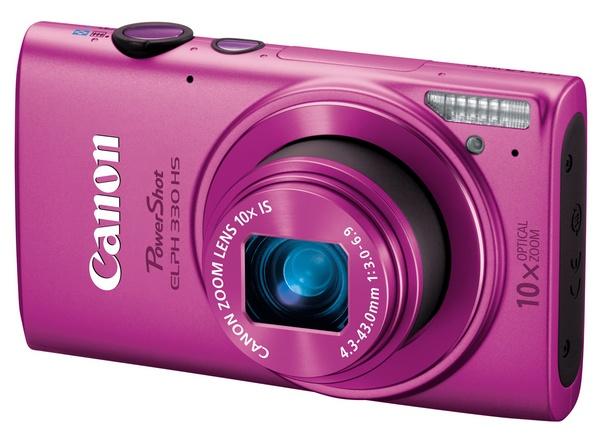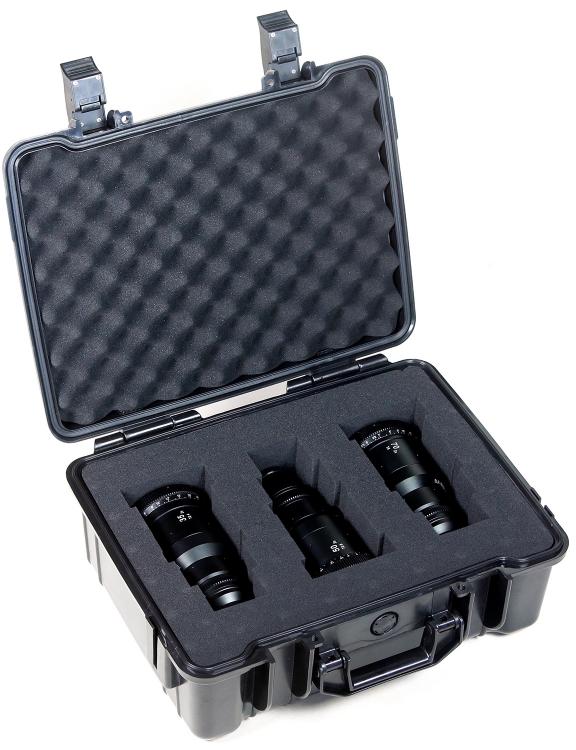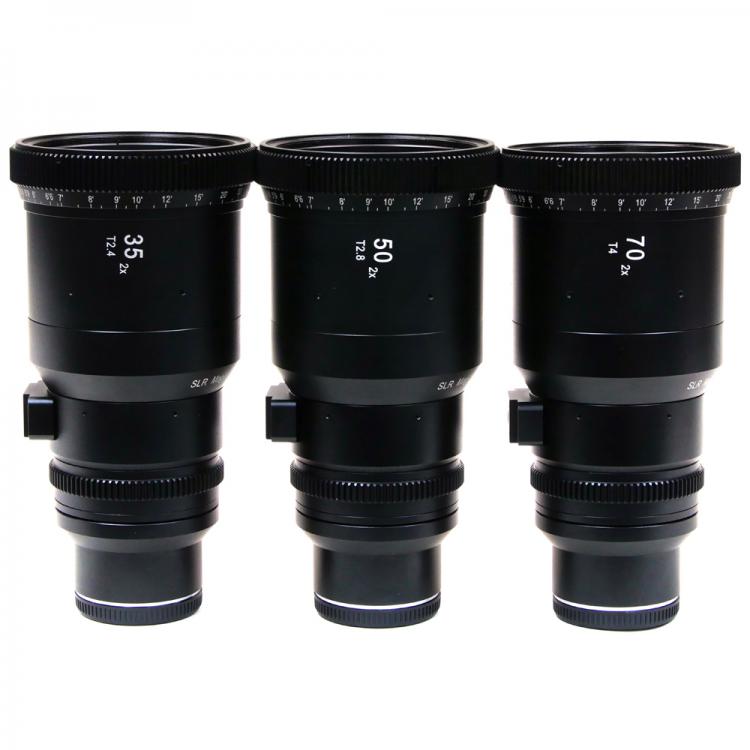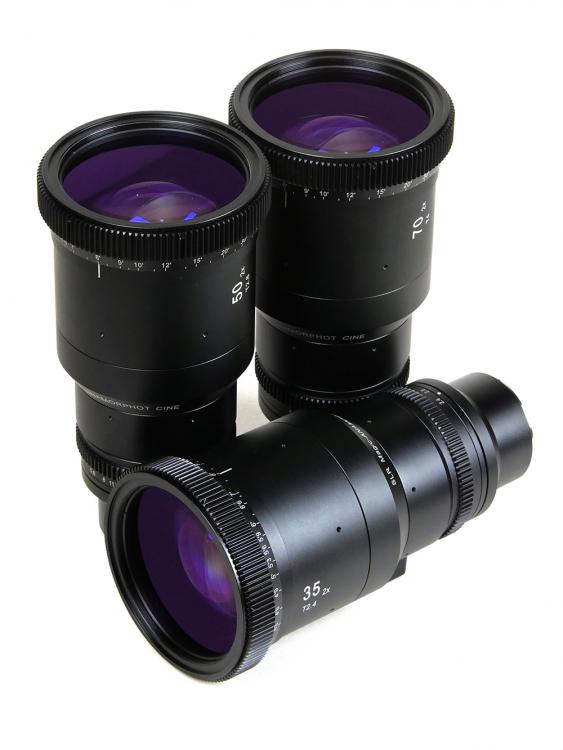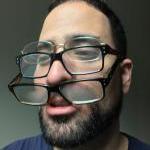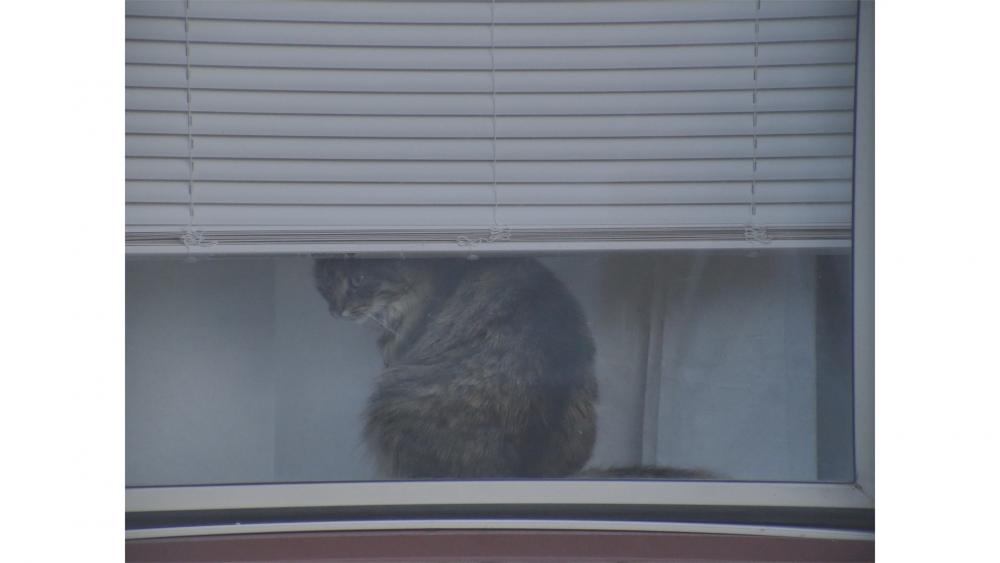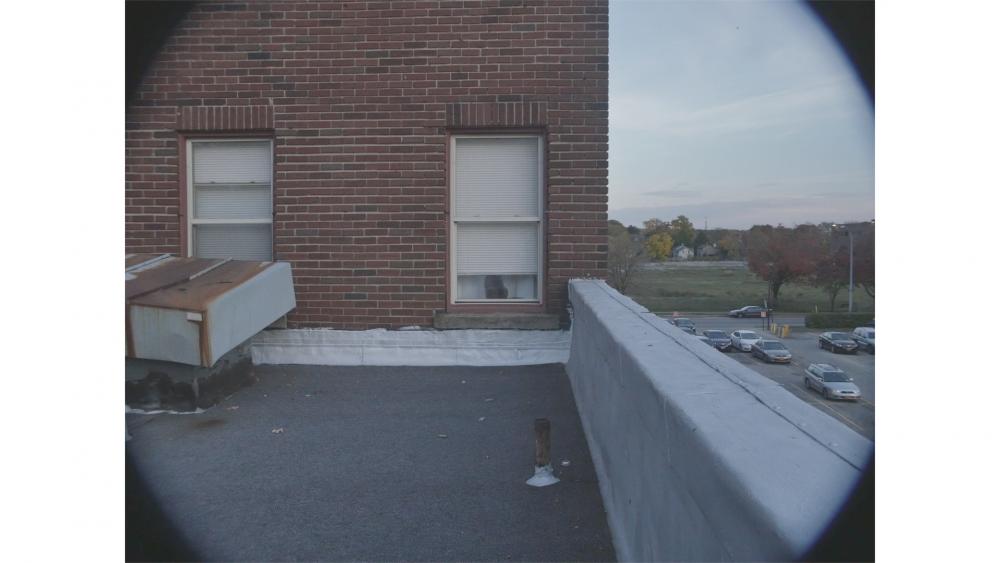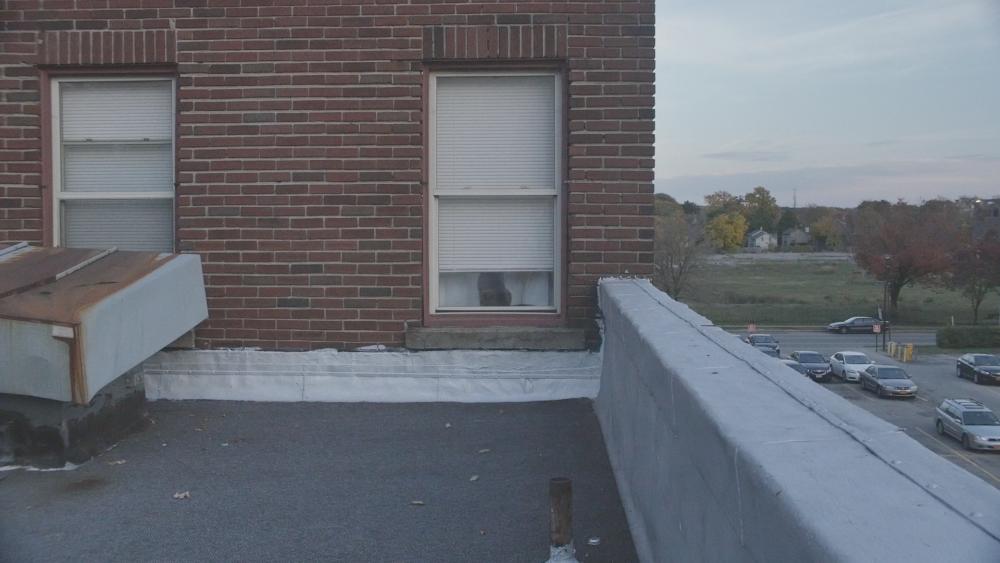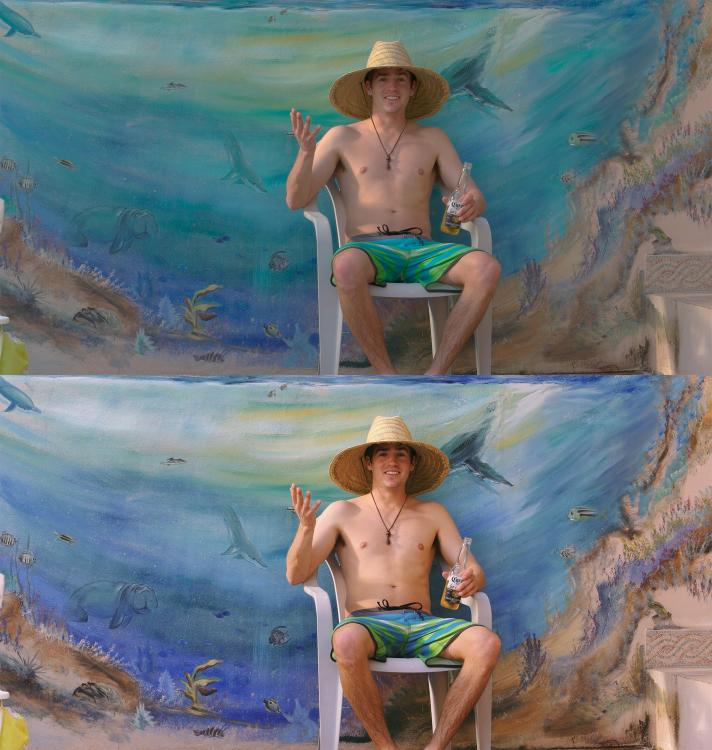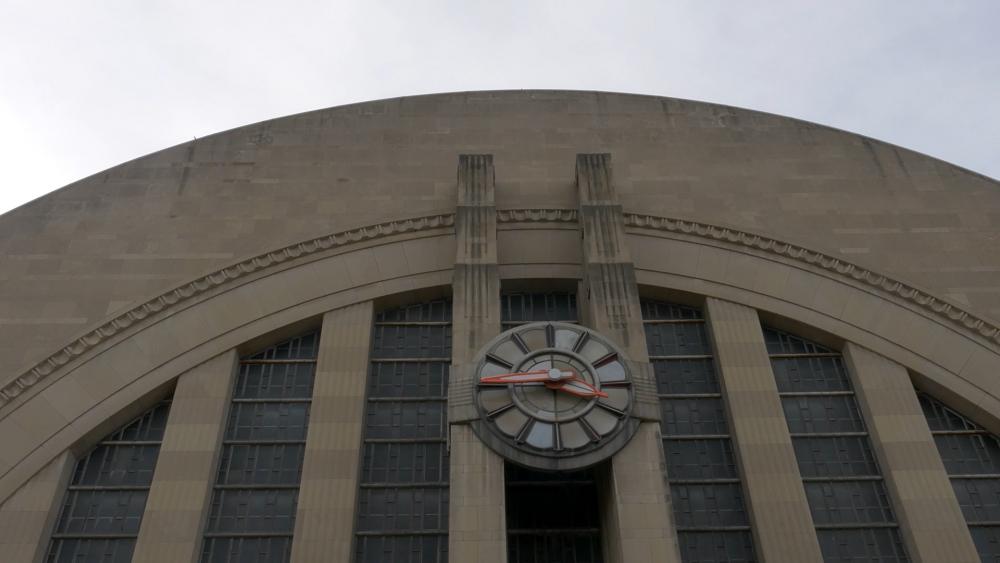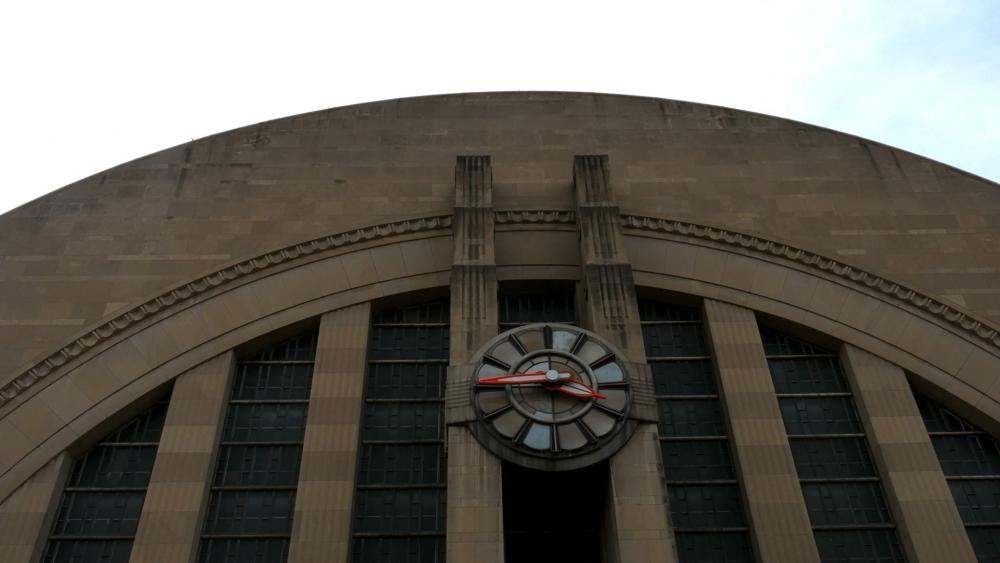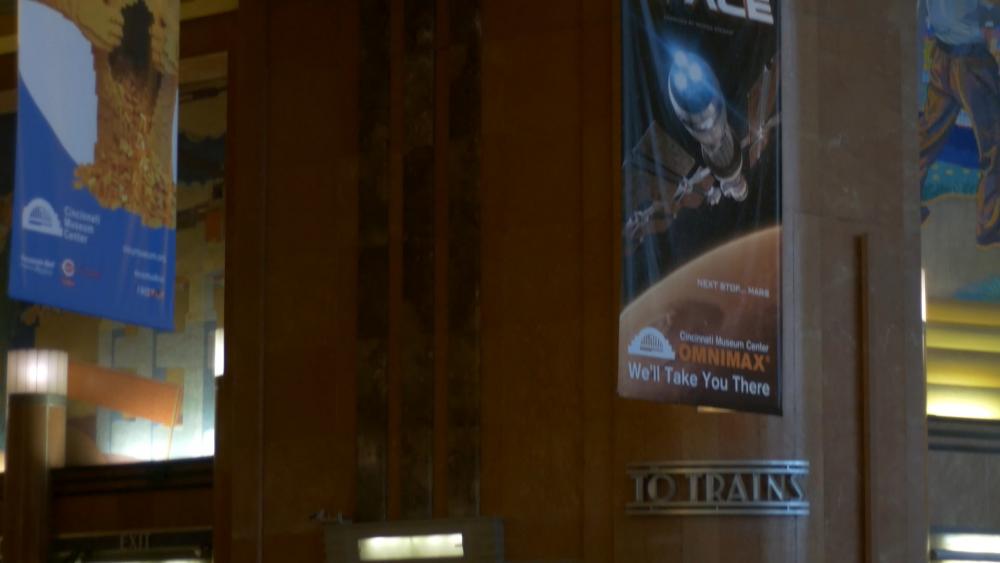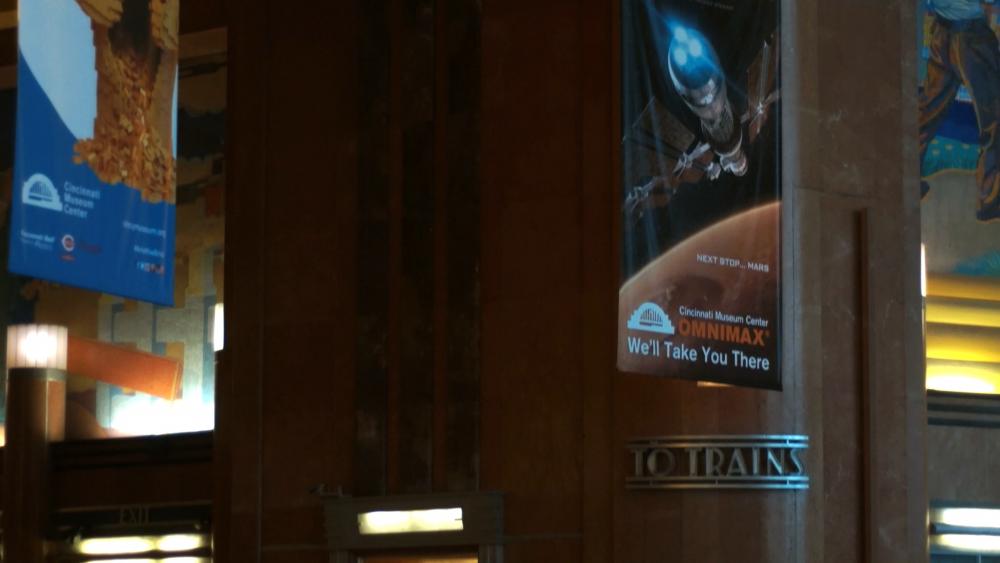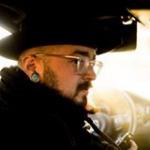Leaderboard
Popular Content
Showing content with the highest reputation on 01/13/2016 in all areas
-
I see comments like this a lot and it always reminds me of the revenge of the great camera shootout 2011 where they compared among other cameras an Iphone and G2 to an Alexa. They had an identical scene set up and the DP could modify it as needed by adding lights or adjusting intensity of the lights that were already there. Yes the G2 and even the Iphone to a degree where made to look pretty good and it showed that a good DP could make them look great. Some took away from that video that even the much cheaper DSLR's could be made to look almost as good as the Alexa, the camera tech doesn't matter it comes down to the talent of the DP. While true I took a different lesson from it. If you watch the video the Alexa team says that they only adjusted the intensity of the lights that were there to add some contrast to the shot since the camera could handle the scene as it was just fine. The G2 team due to the limitations of the camera went through a long list of like 15-20 changes they made - adding lights, etc... Not to mention the extra time it takes in post as well. Now take that scene and multiply it by 100, all that extra time you spend dealing with the limitations or quirks of the camera. Yes you can make the image look great but it can take a lot of extra effort to do so. The big players use cameras like the Alexa because they are rock solid reliable with a flexible and fantastic image. They can spend their time being creative, not trying to over come the limitations of a camera. When you have millions of dollars on the line why risk it only to save some rental money on a quirky or unknown camera when you can use a tried and true proven work horse that you know will get the job done smoothly?5 points
-
RODNEY CHARTERS: BM POCKET CAMERA, 4K ACQUISITION & ALEXA
benymypony and 3 others reacted to enny for a topic
4 points -
RODNEY CHARTERS: BM POCKET CAMERA, 4K ACQUISITION & ALEXA
Zach Goodwin and 2 others reacted to enny for a topic
3 points -
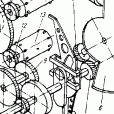
Interesting 35mm vs Digital (Alexa) Comparison
Liam and one other reacted to Volker Schmidt for a topic
For those who might be interested in such things: http://www.yedlin.net/DisplayPrepDemo/ The download version is recommended!2 points -
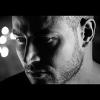
Your ideal NX1 Settings
Geoff CB and one other reacted to KarimNassar for a topic
if you could setup a shot on a tripod that introduces banding and macroblocking issues, such as for example a white wall next to a window that is a little underexposed with gradual fall off of the light on the wall, to compare the internal vs 10-Bit 4:2:2 shogun that would be great. I would assume it makes no difference since the output of the nx1 is not 10bit 4:2:2 but would be interesting to check and compare.2 points -

Your ideal NX1 Settings
Marco Tecno and one other reacted to Pavel Mašek for a topic
Do you think it is necessary to export/import video after denoising? I mean that if the Neat video is at the top in Effects and below is eg. Lumetri then the result should be same as export of denoised video and then import for grading (It think that in this case - Premiere firstly denoise video and then apply other effects in one task). You can avoid another compression. Am I correct?2 points -
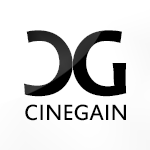
RODNEY CHARTERS: BM POCKET CAMERA, 4K ACQUISITION & ALEXA
benymypony and one other reacted to Cinegain for a topic
Yeah, I love stuff like that! Director's takes on gear, techniques and ideas. Have seen Rodney out with the Newsshooter team getting a look at all the new stuff coming out at these tech innovation events and appreciating the somewhat lower end gear as well. Which I think is really cool that established cinematographers maintain to be grounded and open-minded about these things. Then there's the 'the full Cinematographer Roundtable will air on Close Up With The Hollywood Reporter on Sunday, Jan. 31, at 11 a.m. ET on Sundance TV' which I'm stoked for to see. There's already some snippets up at http://www.hollywoodreporter.com/features/cinematographer-roundtable-cons-cg-betraying-851551 . Those always give great insight on the way cinematographers approach things. Ooh, only just now I noticed the one with the directors already aired: http://www.hollywoodreporter.com/video/watch-thrs-full-uncensored-director-851649 .2 points -
First footage shot with m43 SLR Magic Cine Anamorphics
DanC1 and one other reacted to Andrew - SLR Magic for a topic
2 points -
Might as well throw this into the anamorphic forum explosion! I came across this focusing solution earlier this year by taking my 20% understanding of comments made on varied forums about optics and vaguely knowledgeably combining elements from the large amount of random glass I've amassed over the years. I don't claim to know much about optics, and I'm certainly no engineer, but this technique has worked when I didn't have the budget to rent a set of Kowas or the like. This is definitely a lo-fi, DIY solution. The other products popping up around the forum are higher quality than this, and really this solution's quality depends on the quality of glass you use. Also, I could be totally wrong about how and why this is working. But if you like to tinker as much as I do, and don't mind a lo-fi aesthetic, then, here: (handheld the optics, hence the wobbles) In a nutshell, arrange the following items in the following order: a. Camera b. Taking Lens c. Anamorphic Adapter d. Achromat e. Wide Angle Adapter Instructions: 1. Mount camera, taking lens and anamorphic adapter together. 2. Attach achromat to the front of the anamorphic adapter, as close to the glass as possible. 3. Place the wide angle adapter as close to the achromat as possible. 4. Through your viewfinder (and not lens markings) set infinity focus. 5. Move the wide angle adapter away for close focus. At some point you'll start to vignette from the front element getting to far away. If you want closer focus, reset your 'infinity focus' to something closer, like 15ft. That's what I did in the embedded video. There's more notes in the video description, but here's a couple more to get you started: The trickiest part is finding the relationship between strength of the achromat to the strength of the wide angle adapter. I'm sure someone with knowledge of optics will say how. Loudly. Before dropping cash on any achromat, you can use closeup filters to ballpark a strength. In fact, you can use closeup filters, but image quality will suffer. But good if you want to experiment. Also, old DVX or HVX wide angle adapters are a good starter to tinker. 72mm or higher gives you more travel before vignetting. Any questions, ask away!1 point
-
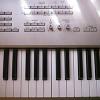
Free Music Resource
Jimbo reacted to Eric Matyas for a topic
Hi everyone, I have a site up with free music that you can use in your videos. It's all original...all my own work. All I ask is to be credited as indicated on my homepage: http://soundimage.org/ I sincerely hope my tracks are helpful. Any and all feedback is welcome and always appreciated. All the best, Eric1 point -
I thought I'd start a topic relating to The Hateful Eight. I'll start with my opinions of the movie... **I'll aim to not spoil the movie for those yet to view it. But please stop reading if you feel I start going too deep into things** I watched the 4th screening on the first day of opening in the UK, at Leicester Square Odeon, London. - The only theatre screening in 70mm in the UK! We were sat close to the optimum position - second row of the Royal Circle, 4 seats from the centre position. The most expensive seats in the house. It cost me £25 for the ticket, £60 for the return train, and £70 for a bed in the hotel across the road from the theatre. So to view the movie I paid a lot of hard earned cash. I went in after 3 beers so was adequately lubricated and relaxed. Plot - Basic and simple. But I didn't feel it lacked anything in the way of entertainment. Characters - Very Very good indeed. Every character was loveable (in a QT character type of way). Each were given superb amounts of great dialogue. The dialogue felt very theatrical. The dark humour and dialogue drove the movie for the duration of the 3hours and I didn;t for one second start wondering when the movie would end. The Goggins/Jackson building of friendship and trust throughout the movie stole the show for me. Aesthetic - Stunning. IMO I felt that the overall resolution was somewhat limited. It certainly felt as if the Panavision lenses weren't quite sharp enough to fully take advantage of the 65mm format. I've seen 2.8k Alexa acquired movies projected digitally that felt higher resolution and more refined. I felt the 65mm non anamorphic imagery from 'The Master', 'Interstellar' and '2001' totally outdoes the overall image from The Hateful Eight. HOWEVER! - in no way did the perceived lack of sharpness affect the viewing experience. if anything I think it added to the feel. I expect if the film had been shot 65mm spherical and delivered in native 5perf/65mm 2.2:1 the overall image would have looked 'technically' superior. If anything I'd have liked to see a little more variation in the landscapes. Visially the whole movie felt very much like a homage to John Carpenters 'The Thing'. The isolation, the bleak and unvarying landscape, the small shooting quarters where most of the film takes place, the characters and the ending too. The lack of trust between characters and in particular Goggins and Jackson dieing on the bed at the end was very similar to how Childs and MacReady go to sleep in the snow. Music - Ennio Morricone's music was superb - they even used one of the themes from his soundtrack to The Thing -and it felt so right!. The way only a small amount of Ennio's music was used in a looping fashion felt a bit like Tarrantino had told Ennio that he was going for some type of humorous reference to the way John Carpenter only used limited material from the soundtrack Ennio wrote for The Thing. Visual Effects - Practical. Lifecasts of heads full of pig guts being blown up. The gore effects were second to none. Dialogue - too much of the N word IMO. I'd have liked to hear a bit more variation. I'd have used c**t a few times to break things up a bit. Goggins' friendly line to Jackson "I'm not dead yet you black bastard" was very funny. Comparison to Pulp Fiction - I know it wont have nearly as much rewatching potential as Pulp Fiction does. My viewing made me come away knowing it was meant to be a theatrical type experience rather than a watch at home type of experience. Pulp can be viewed on a pc monitor without the overall experience being harmed. Comparison to Inglorious Basterds - Better characters but lacks the varied scenery and very very refined lighting of Inglorious. If anything its a shame Inglorious wasnt shot in Ultra Panavision 70. I felt budget of The Hateful Eight was consumed by the logistics of 65mm. The need for way more light, the snowy locations, etc. Some of the side-on shots of the stage coach going through the snow looked like they cost a fortune, but don't have the impact that some of the scenery from Inglorious has. Comparison to Django - About on a par overall. If I gave Django a 7.8/10 i'd give The Hateful Eight an 8.4. I bloody love Christopher Waltz, but felt Tim Roth in some way filled the gap playing a role I feel Waltz would have filled very well. Intermission - Perfect. without the intermission the movie would feel too long. It was a refreshing change to be able to stretch legs, grab a fresh coca cola and talk about the movie. Overall - One of the best cinema experiences I've ever had. On a par with my childhood/teen cinema experience of Jurassic Park, Independence Day and Titanic.1 point
-
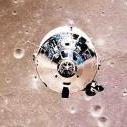
GH4 Anamorphic 4:3 mode as "16mm mode"
TheRenaissanceMan reacted to freeman for a topic
Hey everyone, I have been experimenting with the GH4's 4k anamorphic mode as a sort of 16mm mode. The GH4 can record 4k footage in a 4:3 aspect ratio (designed for an anamorphic de-squeeze in post)... 16mm film is also a 4:3 aspect ratio. I have an old Angenieux 12-120mm cine-zoom in c mount. I love the lens, it has an interesting look to it and has an amazing zoom range for doc work. The only problem to shooting with it was the heavy vignette requiring a significant crop to remove. However, when I switch the GH4 to the 4:3 anamorphic mode, the vignette is much smaller as it opens up the vertical part of the sensor and captures more of the lenses image circle. Here is the view at 12mm. As you can see, heavy vignette but not nearly as bad as it is in 16:9 mode. Here is the same view with the lens set to 120mm. Somewhere around 70mm the vignette mostly disappears, and at 120 its more or a light falloff and not the tunnel vision effect you see at 12mm. Taking the first 12mm view and applying just a 16x9 center crop to elimnate the vignette gives you this image. It works quite well! I am not sure how to determine the final resolution but FCPX tells me that this 4k footage is scaled by 143% (all of this is being done in a 1080p timeline). I could also crop even less if I keep the final aspect ratio at 4:3. This weekend I will be filming a rallycross race in upstate NY and I plan on only using this lens. I will share the results here after filming. Very excited to see how this works. Has anyone else tried this with old 16mm glass? Also, these shots are ungraded but one nice thing about this old lens is that it shoots very flat. Not much contrast, however it leaves a lot of room for grading.1 point -
Totally depends on the price. The 28 2 is the same design as the hollywood as far as I know.1 point
-

Interesting 35mm vs Digital (Alexa) Comparison
Geoff CB reacted to AaronChicago for a topic
Yedlin is going to be shooting Star Wars Episode VIII by the way. I'm guessing he'll go the Alexa route for that.1 point -
Will taking lens change flare characteristics?
Hans Punk reacted to Bioskop.Inc for a topic
You've got everything you need to make the Kowa flare (Helios is the King), but not with that square light (as Hans has stated) - you'd get better results with the light on your phone. The best light source to make your lens flare (like the ones in Star Trek), is to use a high powered torch. A few pointers about flare: ISO/ASA & F/T Stop can all play their role (some cameras produce better flares with High ISO & some with Low ISO - you shouldn't stop down too much on your taking lens). You can actually focus on the flares (ie. make them sharper/stand out more) & you'll notice that there should be 2 sets of horizontal flares (one closer to your camera & one further away). You don't have to have the lens pointing directly into the light source to create flares (so the light creating the flare doesn't have to be in shot). Lastly, practice, experiment & get to know your lens set up. Oh & if you do start buying other lenses, buy the ones with the Golden-ish tinted coatings for the best/craziest flares.1 point -

LED light starter kit
Zach Ashcraft reacted to tupp for a topic
You are probably better off getting a tungsten light with a medium soft-box. Not only will the full-spectrum tungsten source likely be more flattering to your interview subjects, but the larger soft-box will be softer (and more flattering) than a smaller LED source. A used soft-box and light on Ebay might save you money, to boot. A soft-box with a separate focusable light fixture is a versatile kit. On the other hand, a soft-box with a built-in light source (such as a Rifa light) is light-weight, compact, quicker to set-up and more efficient per watt.1 point -
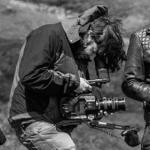
Blackmagic URSA Mini - $2995 - official thread
Don Kotlos reacted to Oliver Daniel for a topic
I preliminary got myself in the "queue" for the BM Ursa 4.6k, the BMMCC and the Video Assist following promises that the product would ship "about latest September". If the cameras were available then, I would of had the money to buy them. Instead, I've had to spend the money elsewhere on other stuff based on the fact I need equipment that's working and ready today, and not "shipping in July or something". My interest in the cameras hasn't reduced, however their lack of transparent communication may have lost a few sales. I love what they do, but I'd just be up front and honest with your customers, and tell them when they are ready... even if they are embarrassed to say..."yes, shipping in July, but not in the same year!"1 point -
Rocky Mountain (Automatic) and Cliptoolz (Have to select the option) do the conversion for you. Editready on Mac does not, with that program it is better to shoot in 16-235.1 point
-
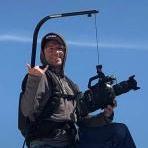
Original camera files - download and share!
benymypony reacted to Geoff CB for a topic
1 point -
Wow, I'm jealous... just kidding. Really, these look really good. I wish I can master something like that, as I am getting used to mine. My settings were said profile untouched, while trying to set the right white balance. I don't mean to hijack, but I did some shots on CineD as well, tweeked with the color of Davnici Resolve and the end results. Two sets (before and after)1 point
-
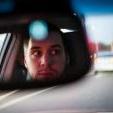
Secondary camera under $3K budget ?
Xavier Plagaro Mussard reacted to TheRenaissanceMan for a topic
If you've already got the 4K recorder, A7S seems like a no-brainer.1 point -
Perhaps if Nikon can update the firmware so that the camera can read 4.2K-4.4K internally then downsample to 4K, the crop would not be as severe. Being 8-bit anyways would make it not difficult a task for the Expeed 5. Of course the possible side effect would be a shorter recording time since the process can generate more heat than usual...1 point
-
Cliptoolz is the best for this, no fuss. Rocky mountain has good conversion, but cliptoolz is just as good and faster on my system, and has a wider range of options and codec settings. It also easily does the 444 with both UHD and 4K footage.1 point
-
Unless you're a sports photographer that needs the extra FPS I would not recommend the d7100 over the similarly priced d5500, which has a better grip and IMO better controls despite having fewer dials and buttons. I speak from experience having shot a lot with them over the summer. And as has already been said, it has 60fps. Also the new Flat profile is great and gives very similar dynamic range to my c100 ii. The colour is also very nice.1 point
-
It's super easy, just make sure you download the right installer for your system. Drag the footage into the window, choose your desired codec, resolution, etc. and let it run. I use it to transcode the NX1 4k H.265 to ProRes HQ 422 and it works really nice.1 point
-
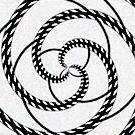
Converting 4k to 10 bit 4444 1080p
benymypony reacted to Don Kotlos for a topic
Have you tried RockyMountains Movie Converter ? http://sourceforge.net/p/rockymountainsmovieconverter/wiki/Getting Started/1 point -

Revival of super 8 film ?
Xavier Plagaro Mussard reacted to Don Kotlos for a topic
Yes definitely one of the factors for the low quality S8 stuff out there. Another being inexperience of the user @Ed David tried to replicated the S8 look with some old camera here: Global shutter, noise, punchy color, aspect ratio, deep DoF, no stabilization, crashed blacks and whites, can be used to get close to the S8 look with digital cameras. I will try give it a try with my A7rii and see how close I can get it. In 720p crop it has a 4ms rolling shutter and coupled with a c-mount lens can give interesting old style results.1 point -
Why not archive everything? Adding the original card to a project archive will be among the smaller files compared to ProRes, effects pre-renders, etc. Seems silly to toss anything. Unless you guys are archiving on CD-ROMs or something. I just use a drive dock, get the plastic drive boxes, and use 500GB or 1TB raw drives. Every couple months it costs me $50 or so. Eventually I'll put a server in the garage in a refrigerator or something (they tend to survive fires and minor floods/water leaks, I'm not in a flood/earthquake/hurricane area) and cat-5 it into the system for a 2nd set of archives. But I have a closet with (as of now) 16 raw drives in plastic boxes and do occasionally have to pull a file from one. I never agonize about what to toss, and usually have all the email threads about a gig, bids, contracts, releases, maps, footage, AE and edit files, renders, and a final ProRes 1080 that can be output to any new formats that come along. I keep a spreadsheet with the key folder names so I can find the right drive in a second.1 point
-
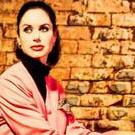
The Revenant
Gregormannschaft reacted to M Carter for a topic
Saw it yesterday and enjoyed it. I felt Inniratu did a great job with subtext, stuff that doesn't show up in a script. Nature itself as a character, and the "reach" of nature, from the settings and power (rivers, storms, wind, animals) to the native "savages", to the barely-more-advanced trappers, up to the fort where one guy is trying to hold on to more evolved concepts of honor and compassion that are (ideally) the heart of a technologically based civilization. I was able to completely enjoy the movie as a visual commentary on humanity's rise from nature, with the sheer power of nature still having sway over technological advancements . Like some of you guys, my wife compared to to "gladiator", but to me Gladiator was a slick hollywood product; and I found this flick to be much more. I found the plot to be secondary to the experience, but… I kinda like Kubrick too. He also has a great way with action scenes, and a verisimilitude that action usually lacks - a more honest sense of the horror that, say, an indian battle would have been. I thought it was a great balance of a much, much larger story told with visuals that could weave back into dialogue or plot. Ain't never been to no college, but the film did work on me in a more between-the-lines way, and I found it one of the most effective things I've seen in ages at that level. (I'm always curious what the people who diss a movie like this consider a "good" film - I sat through like three Super-Hero-Marvel trailers and just thought "Who watches this lame-ass childish shit?? Six year olds??" But the world would be a dull place if we were all the same… and I thought "Batman Begins" was crap and "The Dark Knight" didn't deserve Heath Ledger, so what do I know anyway?)1 point -
I've shot dozens of corporate videos and some celeb interviews with the 7100 - over time I started to notice a lot of busy horizontal noise, but turned out to be the flat profile I was using. I switched to (I think) the portrait setting and tweaked it a bit and it's back to great video, though I bring a lighting package (usually 400 HMI softboxes for interviews) and tend to shoot around 400 - 800 iso. I rented a 5300 for a multicamera shoot and liked the image a lot and the color intercut fine with the D7100; I didn't like the lack of a wired remote (use these on cranes a lot, often the crane is used as sort of a floating tripod) so that, and the screw-drive for older AF lenses (to set initial focus from the back of the crane) were huge for me. But I also do a lot of stills gigs where the extra 7100 features are nice, esp. since I have several screw-drive lenses. The 7100 feels a little "old tech" video-wise, but the actual image is really a beauty, and it will be my main stills cam til it dies. Switched to the NX1 for video and really freaking pleased - though I need a newer phone to run the remote VF software which seems like the best crane solution. If I were trying to decide on a sub-$700 DSLR for stills and video, I'd have a tough time choosing between the 5300 and the 7100 (but I have enough monitoring gear that I don't need an articulating screen and before the NX1 with OLED and peaking I always used a loupe). But for someone shopping around the $1k mark, there are many more choices out there.1 point
-
Canon 700D VS Nikon D5200 BIT RATE hack, which is better for grading?
IronFilm reacted to DevonChris for a topic
Thanks for the compliments :-) The 5200's are very underrated, but the great SOOC images make the post prod work very straightforward. I've shot up to ISO 3200 with them but that is about their limit. Edit : BTW I have never had any issue with the hacked firmware, either with video or photography.1 point -
Can't really go wrong with Olympus glass. They've solid rendering all around their line-up. I didn't go with Pana's 12-35mm f/2.8 OIS, I actually decided to go E-M1 for stills and then use the 12-40mm f/2.8 PRO kitlens (even though the lack of stabilization on GH2/GH4/BMPCC/Z E1). You can get quite stable handheld or just use a mono- or tripod anyways. Then I've added the Olympus 7-14mm f/2.8 PRO. Not really interested in the 8mm fish-eye or the just announced 300mm tele. But the 40-150mm f/2.8 PRO with MC-14 1.4x teleconverter would be a welcome addition and give you 3 flexible zoomrange lenses with consitent qualities throughout. Additionally I have the excellent classic which is the 45mm f/1.8 and last year I finally pulled the trigger on the 75mm f/1.8 ED which I had been eyeballing for the longest time (doesn't get much better than that for portraits). For macro the 60mm f/2.8 ED. Don't have the 12mm f/2 ED, because it used to be priced ridiculously high (they've first brought out a silver version then sold the black version as 'limited edition' :') ), it has come down a fair bit (about 300 EUR), but still didn't go for it. Other lenses would be the 17mm f/1.8 and 25mm f/1.8 of which I've heard good things. But this is a common range in which I have enough alternatives. They've got some pinhole-like body cap lenses, but I wouldn't mess with those. Nespresso, what else? Well, starting out with the Pana GH2 I had the 14-140mm kit lens. At first I adapted vintage glass in addition (Minolta, Pentax). Then added the must have 14mm f/2.5 and 20mm f/1.7 to have a really minimal set-up. Added the 100-300mm for wildlife (with custom r-roesch.de lens collar). Just. There's something about Panasonic lenses... they're very sharp, which kinda makes it brittle, very contrasty and punchy on the colors. It's a very modern and poppy look... which doesn't really help with the stigma that stuff shot with Panasonics looks like 'video'. Olympus just has that more organic rendering. OIS for primes used to be reserved for the expensive Leica branded lenses... the 45mm f/2.8 OIS Macro-Elmarit and the 42.5mm f/1.2 OIS Nocticron. Recently they've brought out the 30mm f/2.8 OIS Macro and 42.5mm f/1.7 OIS under the Lumix branding and priced them accordingly (that's also why I don't understand people saying M43 lenses are so expensive, they don't have to be at all! And recently I picked up the 25mm f/1.7 for 99 USD only!). They're actually pretty great lenses to have and seem to have lost a bit of that typical Panasonic modern look and render a bit more organic. Seems like they're heading the right way! But... I'm still not really in love with any of Panasonic's offerings. Sure, the 42.5mm f/1.2 is probably quite magical, but I see it go for 1249 EUR right now and there's just no way. It probably should've been priced roughly like the 75mm f/1.8 by Olympus. The pancakes are quite attractive just for their shear size. But other than that, Panasonic is not really all too exciting. What's exciting? Well, third parties. Just the lens manufacturers. Before Sigma renamed the 19mm, 30mm and 60mm f/2.8 to 'ART', these were availlable as 'EX DN' and actually featured proper grippy focus rings (now it's just one smooth surface). Managed to snap up the 19mm and 30mm for 100 EUR/each. Optically really damn good for the money. Build quality a bit iffy and rattles when powered off, but who cares. Had gotten into SLR Magic. Had seen a shootout here: http://3d-kraft.com/index.php?option=com_content&view=article&id=137:adorable-25s-25mm-f095-speed-lens-comparison-on-lumix-gh3&catid=40:camerasandlenses&Itemid=2 and decided the SLR Magic HyperPrime CINE 25mm T0.95 had to be the next to get. I don't regret it one bit, it's probably my favourite lens to throw in front of a Micro Four Thirds camera. It's just epic. That's the only SLR Magic I went for so far though. Another Chinese manufacturer is Zhongyi. I have their 24mm f/1.7 and 42.5mm f/1.2 (like the previously discussed Leica DG Nocticron). A good write-up can be found here: http://www.mirrorlessons.com/2014/11/17/the-zy-optics-mitakon-24mm-f1-7-and-42-5mm-f1-2-micro-four-thirds-mount-complete-review/ . Alan Besedin also has an impression on his channel. Basicly these lenses have some really quirky character, reminiscent of vintage lenses. It's a kind of you either hate it or love it situation. But I like it! Recently I've gotten their 25mm f/0.95 in, which fits right in with the other two and is just so damn small! These are not lenses you'd use for their solid politically correct qualities, but for their quirky creative bursts. Not for everyone, but I definitly appreciate it! I guess the only other native mounts are the Veydras, which I jumped on when they were still rather affordable on Kickstarter. I was send the 16mm, 25mm, 35mm and 50mm T2.2 right away, the 12mm took a little longer to get finished. It was a bit of a risk investment, but the risk paid off in the end! Very solid glass and construction, proper cinema primes. Detail rendering is on point and they're solid throughout. Not the most exciting lenses in terms of character, or in the words of Adam Wilt perhaps even 'boring', (solid write-ups: http://provideocoalition.com/awilt/story/first-look-veydra-mini-primes-for-micro-four-thirds & http://noamkroll.com/veydra-mft-cinema-lens-kit-review-rokinon-cine-lens-comparison/ ). But he also states they're basicly 'scaled-down Ultra Primes for micro four thirds cameras' and I can't think of any bigger compliment than that. Good thing now is that the mount is user swappable, which means I can get conversion kits and change the mount myself (to either E-mount (only S35 covering, and the wide lenses will vignette) or C-mount). So, that kinda of makes me excited to get a Sony A6100...1 point
-

C100 MkII vs Ursa Mini 4K
TheRenaissanceMan reacted to Lintelfilm for a topic
Thanks man, this is really great info. What you say all adds up based on what I've seen of the C100. I think you're right about the MkII "splitting the difference" too. It's definitely better in low light - in terms of DR and colour. I'm wanting it mostly for documentary style stuff - so although good photography is very important to me, it's not the end of the world if skies clip etc. 12 stops is fine. I get frustrated with my GH4's under-12 stops of dynamic range (I don't use V-Log) next to my BMPCC. But With BMPCC footage I always crush it down to what is probably about 12 stops anyway because I like inky blacks and bold colours. As you say as long as I expose properly with the C100 I should be OK. The C100 stuff I'm grading at the moment has a noticeably more useable detail in the shadows than the GH4 (though I don't know what profiles the shooters used). The C100 MkII by the way has had it's colour tweaked a little - the red/orange, blue/teal thing I'm familiar with from MkI footage is definitely less pronounced. I prefer the MkII colours a fair bit. They also stay intact into higher ISO's I think ...1 point -
Well since we're hammering away at this, I'll chime in. I'm all for the democratization of technology. I saw these (FM whosawhatzit) and immediately started pouring over patents and the such, shortly finding that Iscos are afocal blocks with a variable diopter in the front. So here we have to individuals capitalizing on this "revelation." God Bless America. I, on the other hand, and planning on finding a cheaper solution with some "surplus" (surplusshed.com) and some shoddy test builds. Lucky for me, I have a friend that currently has a satellite (imaging, of course) in orbit and he's more than happy to hash out some details. Once I have some concrete findings, I'm sharing it with the world wide web. Every creative can benefit from this. Preach on @tonydtv!1 point

_-_Bradley_Cooper_Sienna_Miller_Movie_HD_-_YouTu.thumb.jpg.d08751d0034235619cd494c126f886a7.jpg)
